Limpa is a classic Swedish rye bread with a tender crumb and a hint of fragrant orange and anise seed. While some rye breads can be tricky to work with, this recipe is incredibly simple. If you are new to baking rye bread at home, this Swedish Limpa is the perfect place to start.
This recipe comes from my great-grandmother. In the early 1900's, she immigrated to America, bringing this Limpa recipe with her. I've updated it slightly and added more detailed instructions, but it is very much in its original form.
The combination of orange and anise in this simple buttermilk rye bread is as addictive as it is unusual, and I know you are going to love it. I am so delighted to carry this treasured family recipe forward and share it with you!
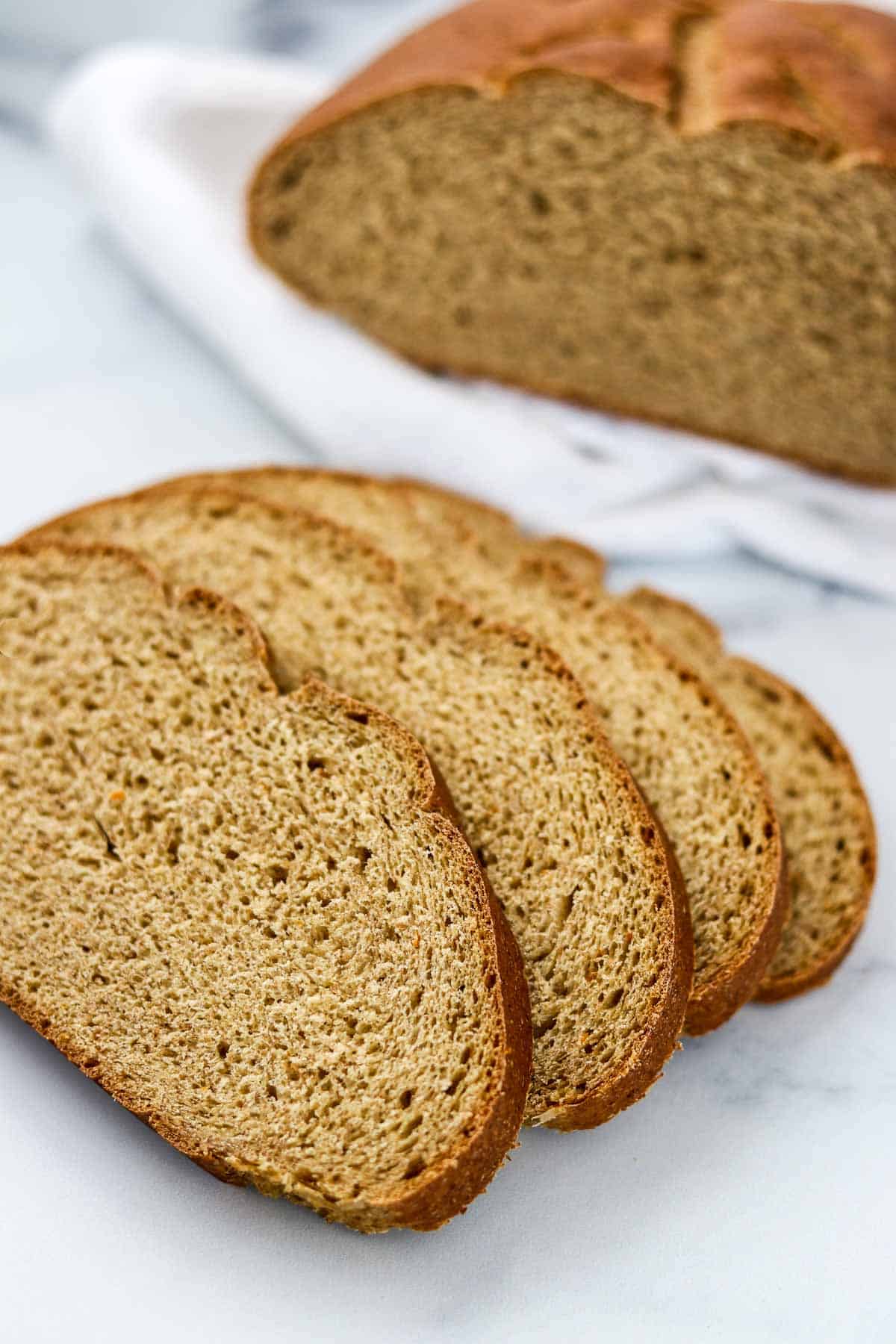
Why This Recipe Works
- This simple loaf contains just enough bread flour in addition to rye flour to avoid any of the challenges associated with rye bread baking.
- The crumb is exceptionally tender thanks to the addition of buttermilk.
- Orange zest and ground anise seed provide just the right combination of bright citrus flavor and warm spice to the bread.
The Ingredients
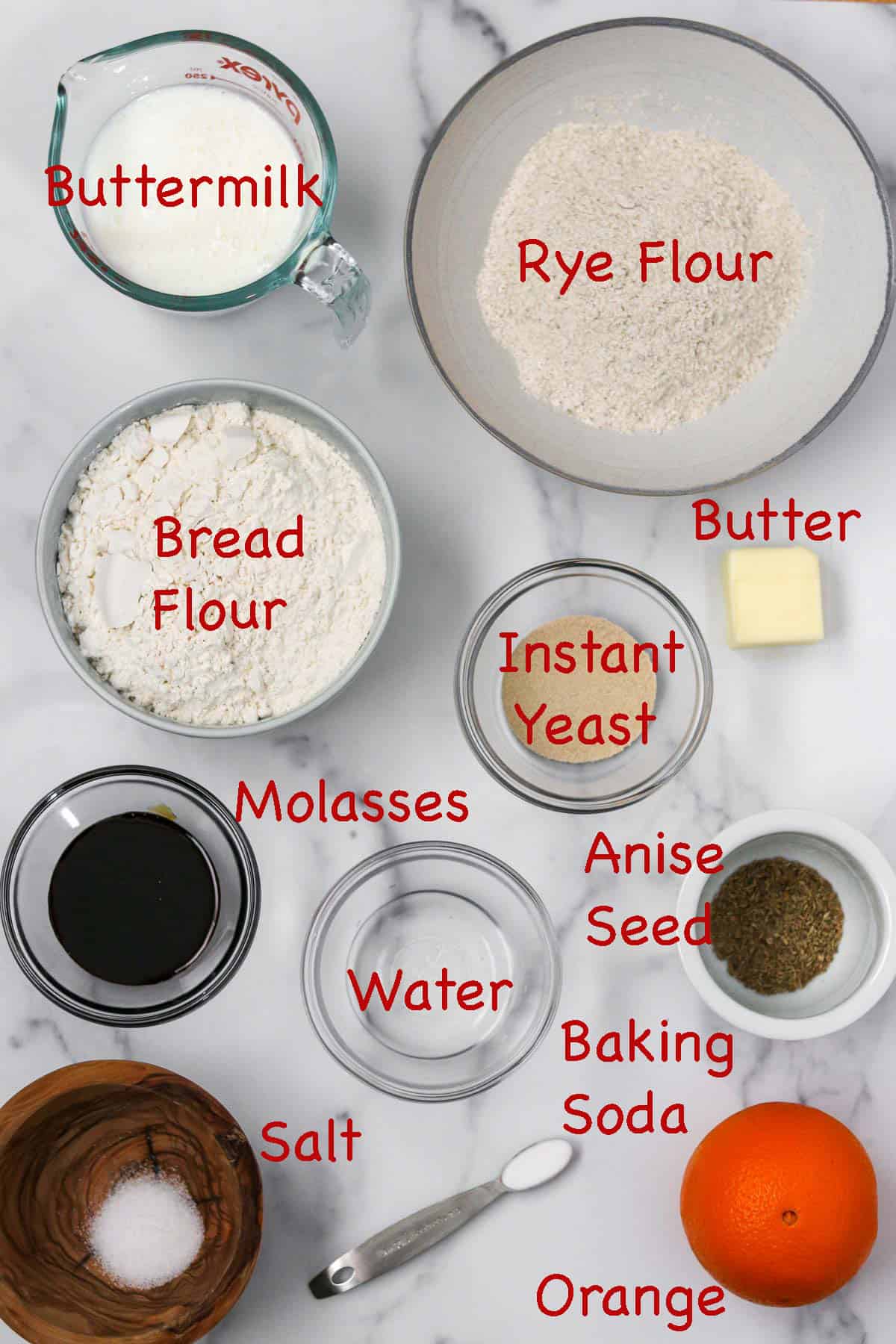
- Bread Flour and Rye Flour. As I mentioned above, this Swedish Limpa contains both bread and rye flour which makes it incredibly easy to work with. Bread flour has a high protein content and creates a nice gluten structure for the loaf, and the rye flour has very little gluten but brings an earthy, robust flavor.
- Instant yeast. This recipe calls for instant yeast, which is not the same as active dry yeast. When you go to the store to buy yeast, you will see two different kinds: Instant or rapid rise yeast and active dry yeast. The essential difference between the two is that instant yeast can be mixed right in with the dry ingredients whereas active dry yeast needs to be proofed in warm liquid prior to adding it to the recipe. Instant yeast is also more reliable, effective and fast-acting.
- Baking soda. While it might seem odd to include baking soda in a recipe that is already leavened with yeast, but the job of the baking soda here is just to tame the acidity of the buttermilk slightly so that the yeast works more effectively. Commercial yeast works better in a less acidic environment.
- Orange zest. The zest of one orange brings a bright, citrus flavor to the loaf. If you aren't familiar with how to zest an orange, check out this video for an easy tutorial. I love my microplane grater for this job.
- Molasses. The sweetener here is molasses which brings a robust sweetness to the bread. I like to use a mild molasses, such as the Grandma's brand which is available at most supermarkets nationwide.
- Anise Seed. Anise seed is used as a spice and lends a fennel or licorice-like flavor to this Swedish Limpa. (If you're not a huge licorice fan, don't worry. I don't like licorice and I love this bread. The flavor is very subtle). Check out this article if you'd like to learn more about cooking and baking with anise seed.
How to Make This Recipe
- Begin by toasting your anise seed in a dry skillet over medium heat until fragrant, about 2-3 minutes. Transfer to a spice grinder or mortar and pestle and grind to a powder. If you are using ground anise you can skip this step.
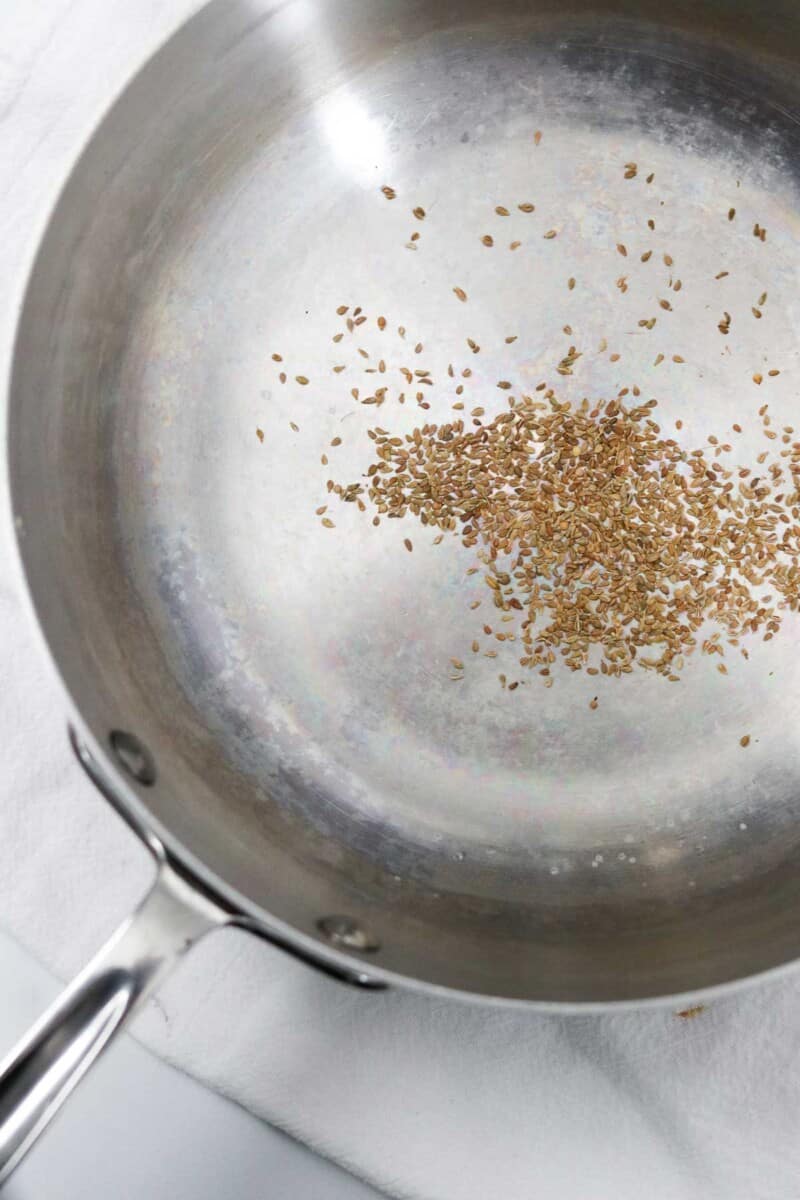
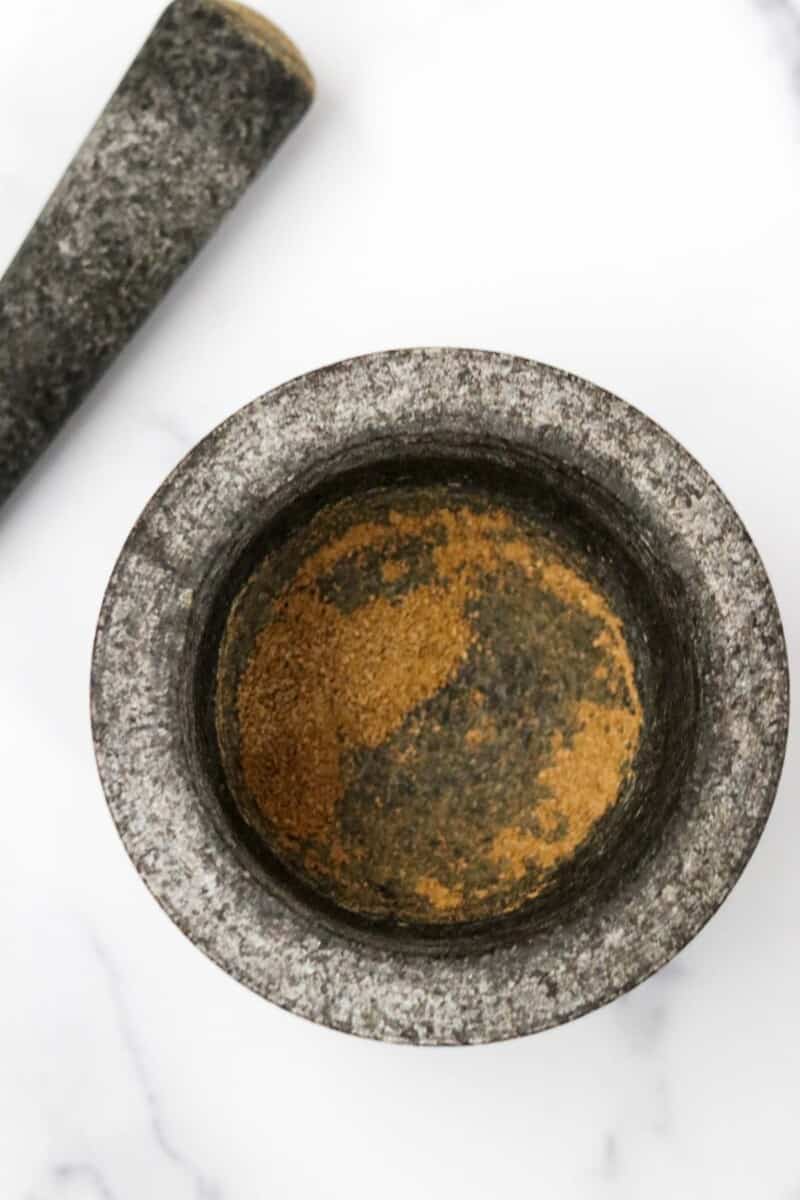
- Combine the orange zest, water, butter and molasses in a small sauce pan. Heat over medium heat until the butter melts and mixture begins to bubble around the edges. Set aside to cool slightly. It will be ready to use when it is just warm to the touch.
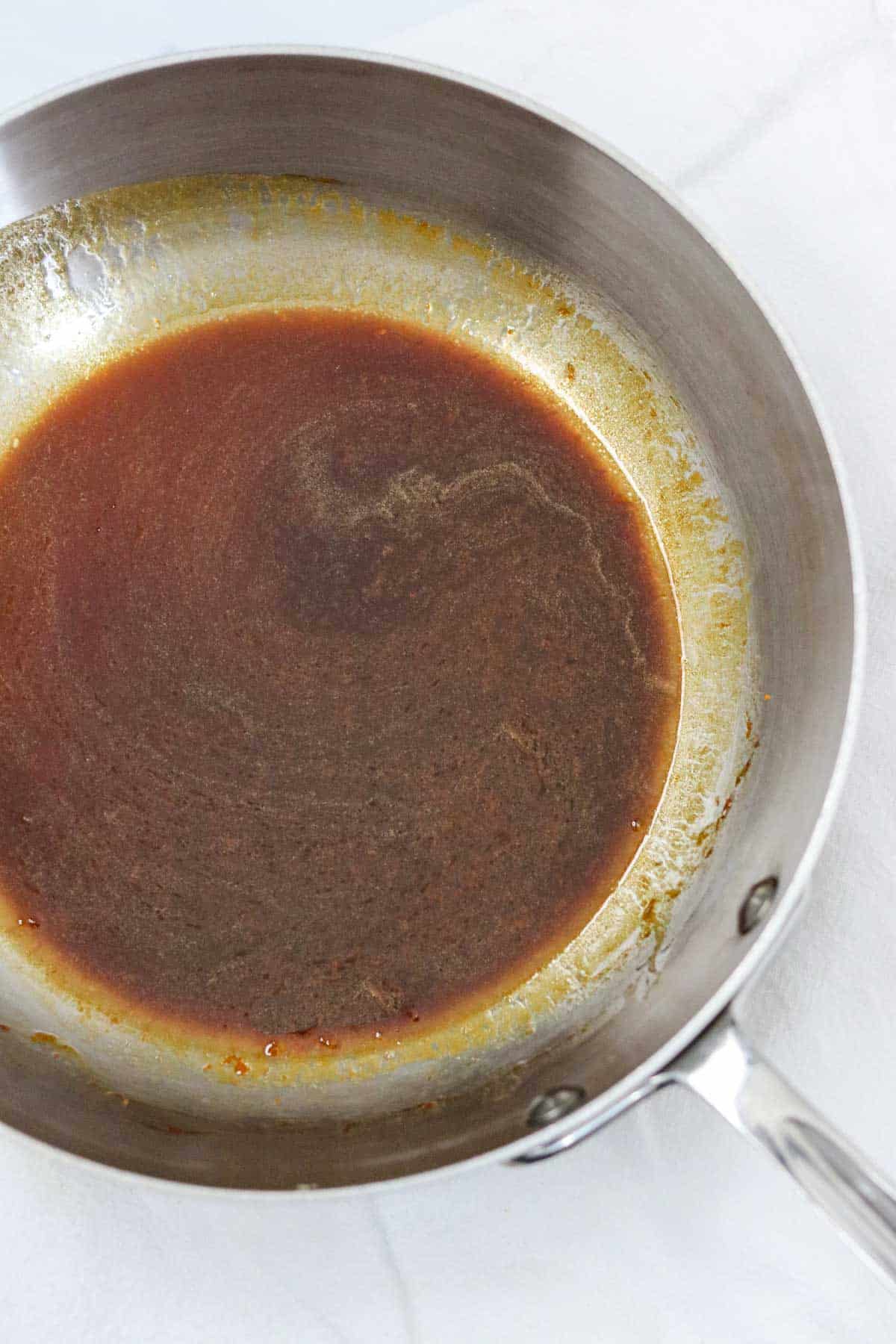
- While the liquid mixture is cooling, stir the baking soda into the buttermilk and set it aside.
- Combine the cooled molasses mixture and the buttermilk in the work bowl of a stand mixer. Add the rye flour, salt, yeast and ground anise seed. Using the dough hook attachment, mix on low until combined. Add the bread flour and continue to mix on medium low until the dough forms into a ball. Increase speed to medium and knead until the dough is smooth and clears the bottom and sides of the bowl, about 4 minutes. You can do this by hand, but the kneading process will take longer.
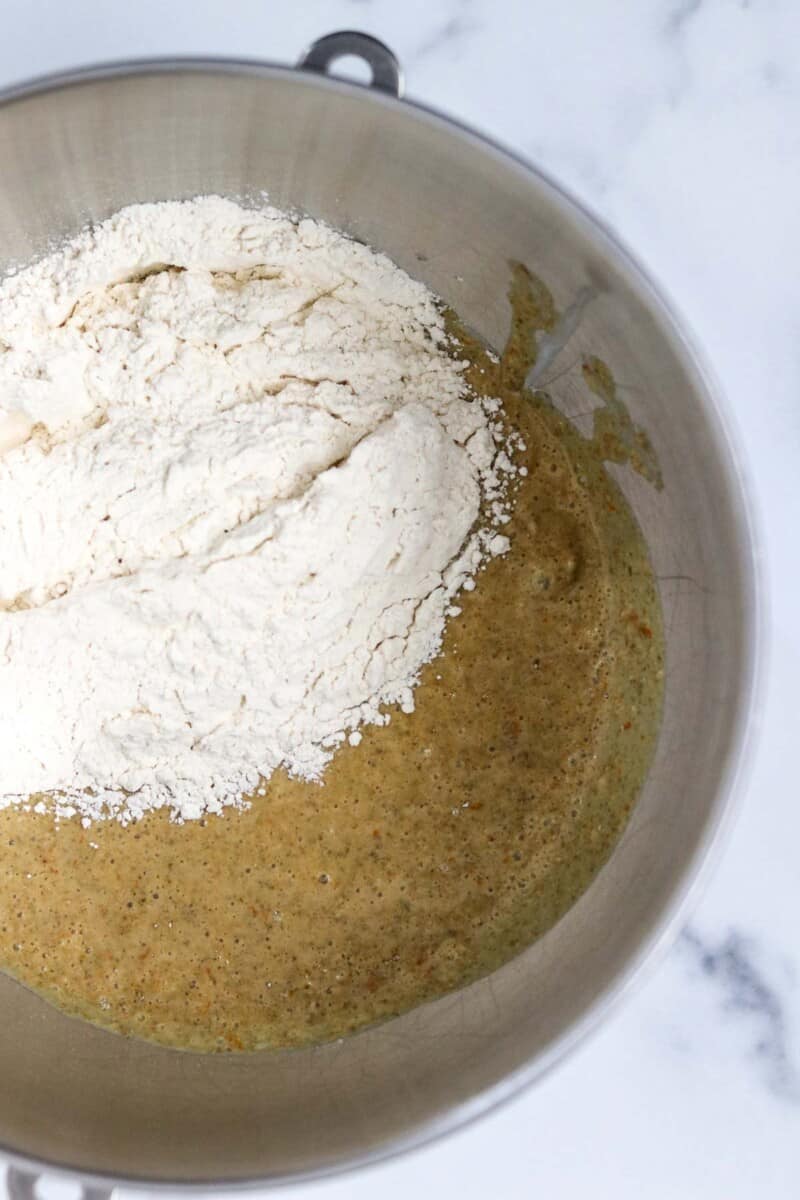
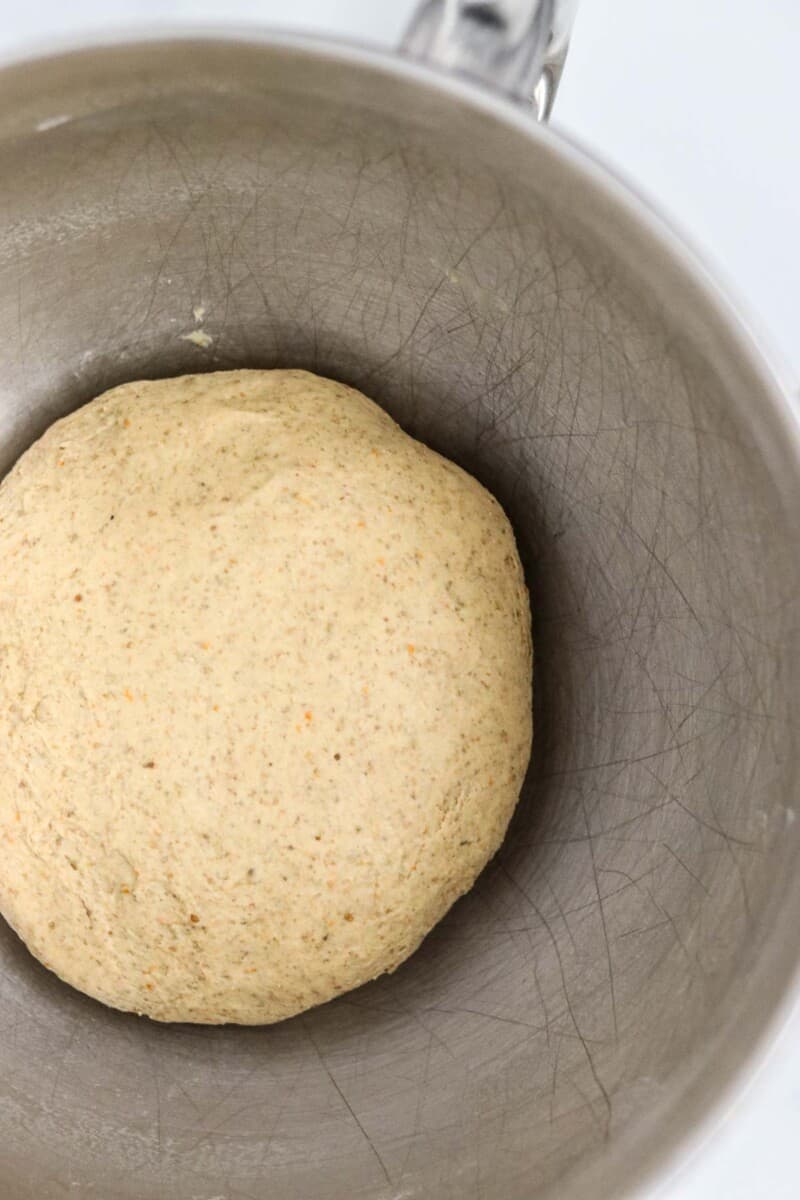
- Cover the bowl with plastic wrap or a clean kitchen towel and let the dough rise at room temperature until doubled in size, about 1 ½ to 2 hours. The time this takes will largely depend upon the temperature of your kitchen and the dough itself. Warmer conditions will cause the dough to rise faster.
- Punch down the dough and transfer it to a parchment-lined baking sheet. Fold the dough in on itself and form it into an oval shape that is about 1 ½ inches high. Cover lightly with plastic wrap and allow to rise for another 45 minutes to an hour. Meanwhile, preheat the oven to 375 degrees.
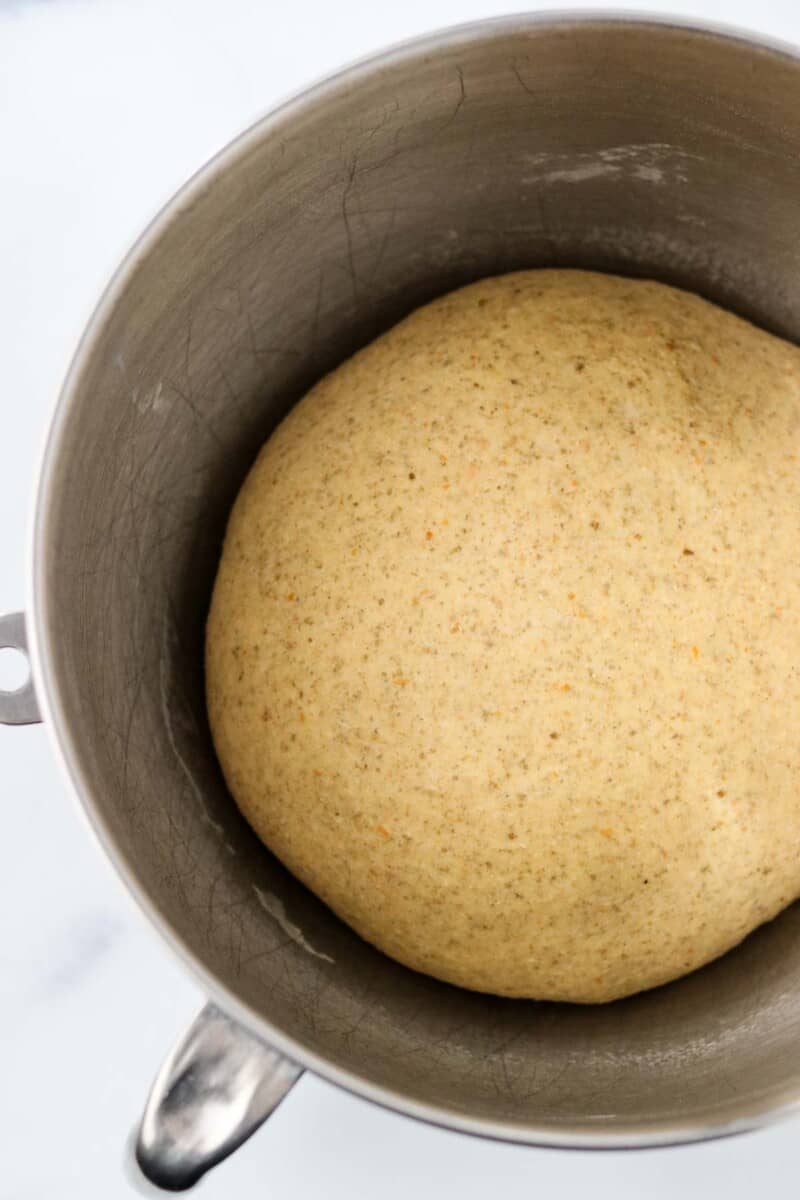

- Score or slash the top of the dough with a sharp knife or razor blade. You can do this in a design or just a simple slash or a few slashes across the top will do. The point is to "cut" the dough so that the gases released as the yeast rises in the oven have a designated place to escape rather than blowing out the top or side of the loaf or allowing it to grow too tall. This step helps to keep your loaf pretty.
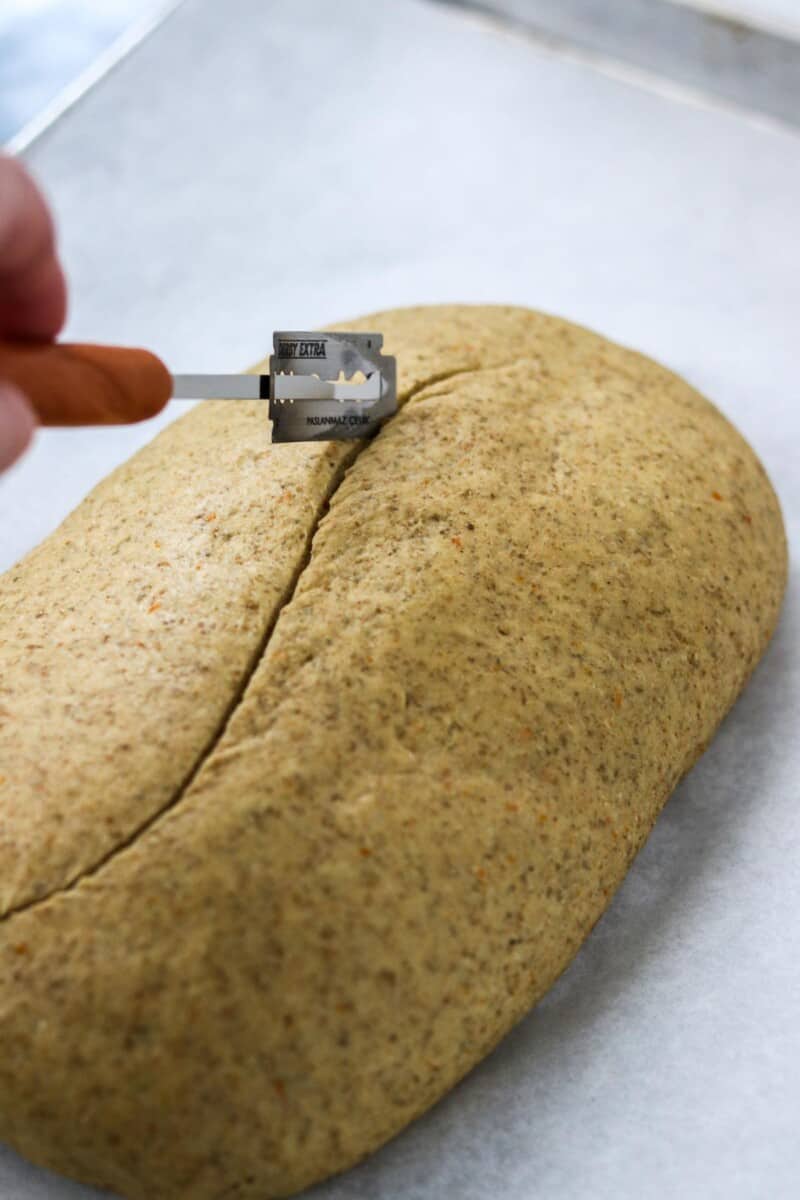
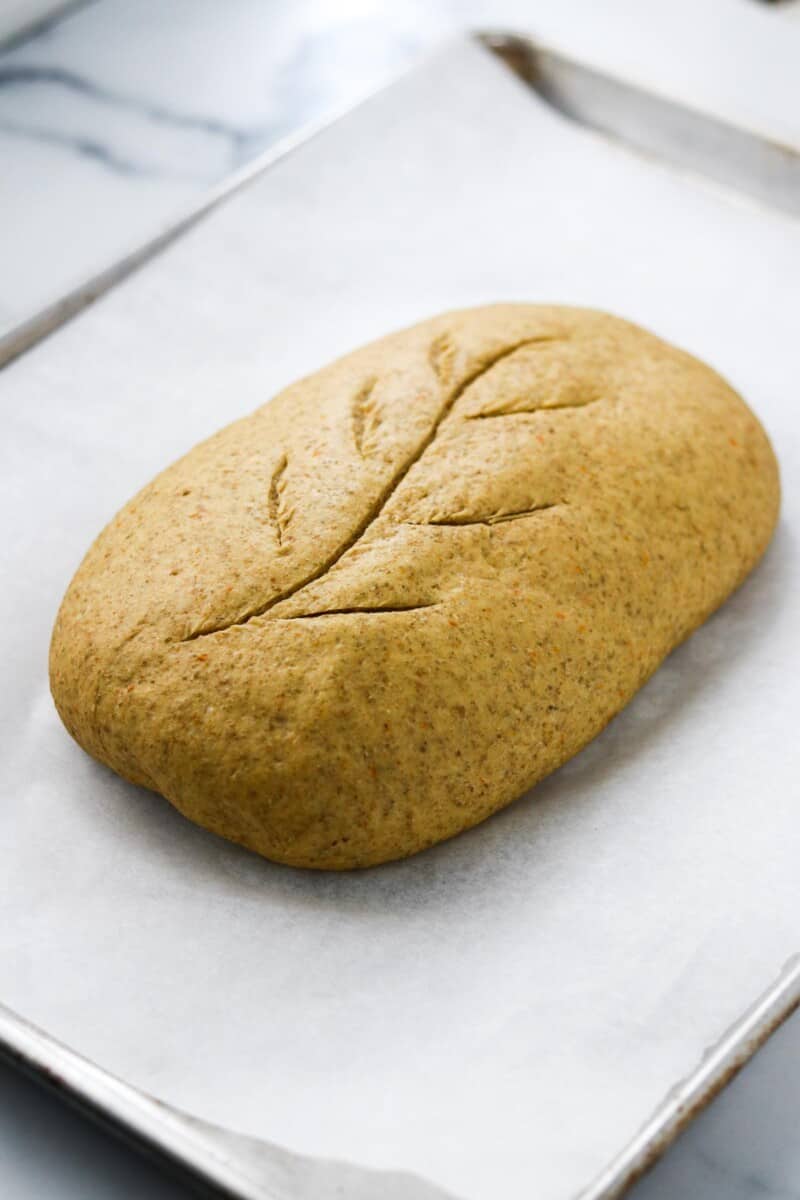
- Transfer the limpa to the oven and bake until golden brown, about 30-35 minutes. Transfer to a wire rack to cool completely. Slice and enjoy!
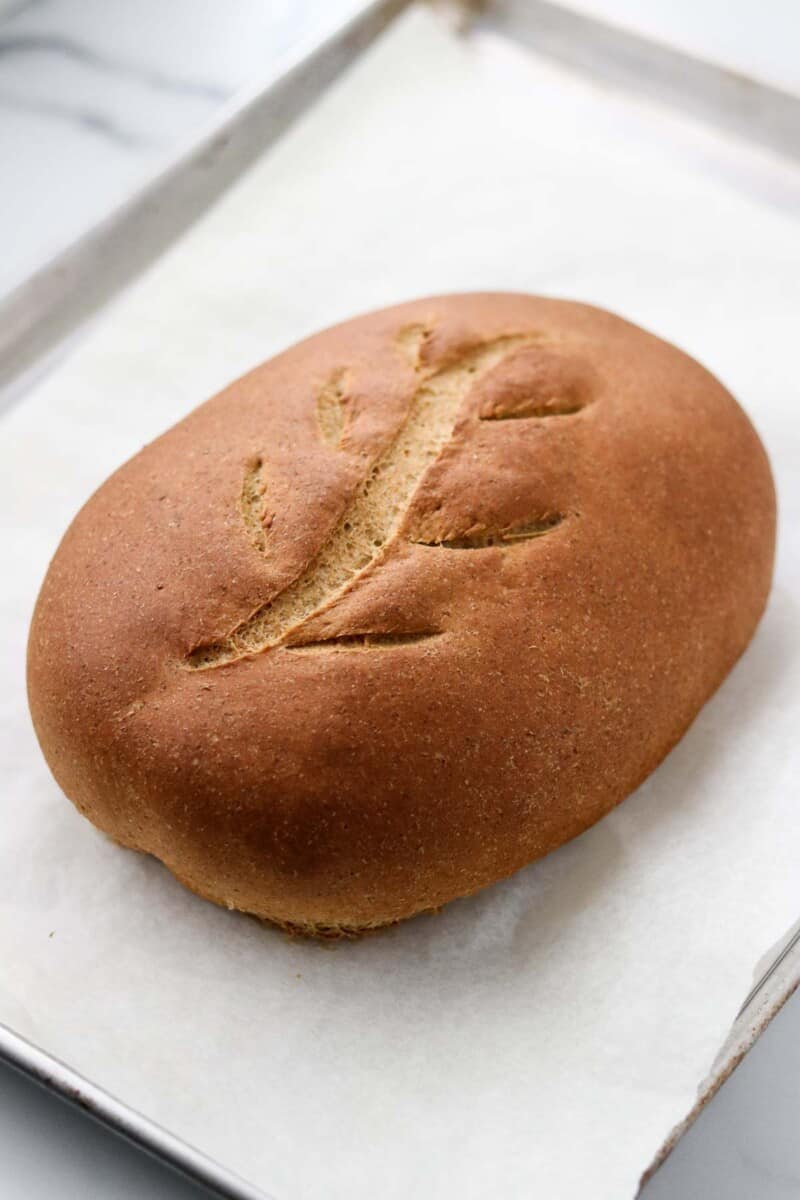
Expert Tips
While this Swedish Limpa Bread is incredibly easy to make, I do have a few tips and tricks for ensuring Limpa success every time:
- Make sure that the molasses, water, butter and orange zest mixture isn't too hot when you add it to the rye flour mixture. Liquids over 120 degrees F can kill the yeast and cause your bread not to rise. 90-95 degrees F is ideal. This will feel just warm to the touch.
- Use instant yeast rather than active dry. As I mentioned above, it is a more reliable product and can be mixed in directly with the dry ingredients rather than requiring proofing like active dry yeast. If you want to use active dry yeast instead, see the FAQ below for instructions.
- Score or slash the top of the loaf so the gasses created during baking can escape where you want them to as your loaf expands in the oven. A sharp knife or razor blade works fine for this, or you can use a special tool called a lame that is specially designed for scoring dough. A lame is essentially a double-edged razor blade attached to handle, and it makes scoring your loaves a breeze. If you plan to do a lot of bread baking, a lame is worthwhile investment.
- Allow the loaf to cool completely before slicing into it. This (along with using a serrated bread knife) will ensure clean slices every time.
FAQs
The word "limpa" simply means loaf in Swedish.
In the United States there are many recipes for Swedish Limpa, most of which contain orange zest and spices such as anise, fennel and/or caraway. If you are of Swedish decent, chances are there is a recipe for Limpa in a family recipe box somewhere.
Feel free to leave them out if you would like a more simple version of Swedish Limpa. Many of my readers who live in Sweden tell me that a plain version of this bread is actually more common there than this version with orange zest and spices.
If you don't have buttermilk on hand, make a buttermilk substitute by adding 1 tablespoon of lemon juice or white vinegar to a liquid measuring cup. Fill the remainder of the cup up to the 1 cup line with regular milk. Let the milk and lemon juice or vinegar sit for 10 minutes to thicken and use the mixture in place of the buttermilk in the recipe.
Yes. If you are using active dry yeast, you will need to proof it it in warm liquid first. Simply add the active dry yeast to the butter/water/molasses mixture once it is just warm to the touch (if the liquid is over 110-120 degrees F, it may kill the yeast). Let it proof for 10 minutes before adding it to the dough.
Yes! Use a plant-based milk instead of regular milk to create a buttermilk substitute as outlined above. Use vegan butter or canola oil in place of the butter.
Wrap the completely cooled loaf tightly in plastic and store at room temperature. The bread is best within the first 24 hours but will keep for 3-4 days.
Absolutely! Wrap the completely cooled loaf in plastic wrap and transfer it to a plastic freezer bag. Tightly seal and store in the freezer for 2-3 months.
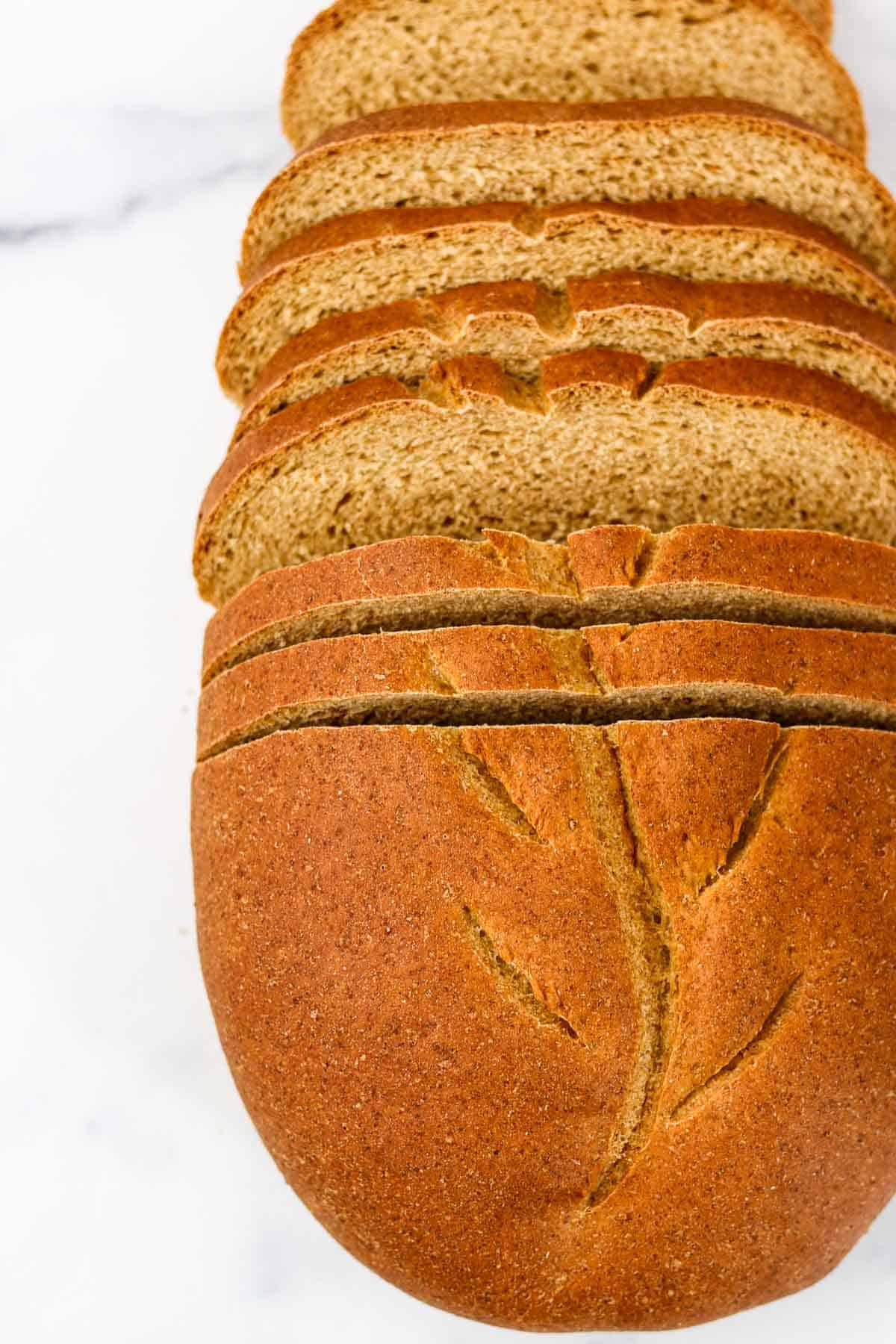
Related Recipes
Looking for more Scandinavian breads to bake? Check out this post for 8 Easy Scandinavian Bread Recipes to Bake at Home for more ideas!
This rye bread is not a traditional base to use for making smørrebrød (Nordic open face sandwiches) but don't let that stop you! I often use toasted Swedish Limpa as a base for open face sandwiches with blue cheese, roasted pear compote and toasted hazelnuts. Absolutely delicious! It would also be nice in place of the white bread in this Toast Skagen recipe.
I hope you give this deliciously moist and fragrant Swedish Limpa Bread a try! It's a family favorite that I'm sure your friends and family will love as well.
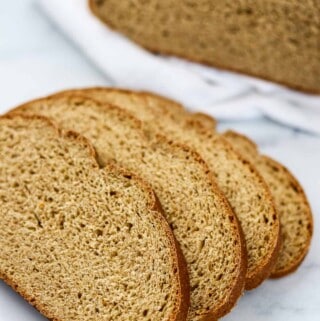
Swedish Limpa Bread
Ingredients
- 2 tablespoons butter
- 2 tablespoons water
- 2 tablespoons molasses
- Zest of 1 orange
- 1 cup buttermilk (230 grams)
- ¼ teaspoon baking soda
- 1 teaspoon anise seed toasted briefly in a dry skillet and then ground, or 1 teaspoon ground anise seed
- 1 teaspoon fine salt
- 2 teaspoons instant yeast see note below
- 1 cup dark rye flour (140 grams) I use the Bob's Red Mill brand
- 2 cups bread flour (280 grams)
Instructions
- Combine butter, water, molasses and orange zest in a small saucepan and heat to a simmer. Remove from heat and cool until it is just warm to the touch.
- Combine buttermilk and baking soda in a liquid measuring cup. Stir together and set aside.
- Add buttermilk mixture and molasses mixture to the mixing bowl of a stand mixer.
- Add ground anise seed, salt, yeast and rye flour to the bowl.
- Using the dough hook attachment, mix on medium low until ingredients are combined. Add the bread flour and continue to mix on medium low until the dough is fully combined and clears the sides of the bowl. Increase speed to medium and knead for approximately 4 minutes. If you are mixing and kneading the dough by hand, the process will take longer.
- Remove the bowl from the mixer, cover with plastic wrap and let the dough rise at room temperature until doubled in size, approximately 1 ½ to 2 hours.
- Preheat the oven to 375 degrees. Punch down the dough and remove it from the bowl. Fold it in on itself and pat it into an oval shape that is about 1 ½ inches thick. Cover lightly with plastic wrap and allow to rise for another 45 minutes to an hour.
- Remove plastic wrap and decoratively score the loaf with a razor blade or a sharp knife. Place on a baking sheet and bake until golden brown, 30-35 minutes. The internal temperature of the dough should be at least 198 degrees when it is done. Allow the bread to cool completely on a wire rack before slicing.
Video
Notes
- If you want to use active dry yeast instead of instant yeast, add the active dry yeast to the butter/water/molasses mixture once it is just warm to the touch (if the liquid is over 110-120 degrees F, it may kill the yeast). Let it proof for 10 minutes before adding it to the dough.
- Score or slash the top of the loaf so the gasses created during baking can escape where you want them to as your loaf expands in the oven. A sharp knife or razor blade works fine for this, or you can use a special tool called a lame that is specially designed for scoring dough. A lame is essentially a double-edged razor blade attached to handle, and it makes scoring your loaves a breeze. If you plan to do a lot of bread baking, a lame is worthwhile investment.
- Allow the loaf to cool completely before slicing into it. This (along with using a serrated bread knife) will ensure clean slices every time.
Nutrition
If you loved this recipe, give it a star review! Also, snap a picture of your Swedish Limpa Bread and share it with me on Instagram using the hashtag #truenorthkitchen and tagging me @true_north_kitchen.


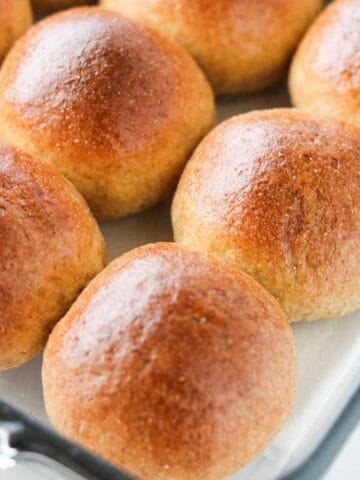
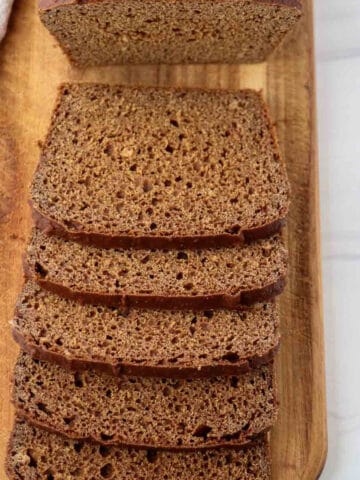
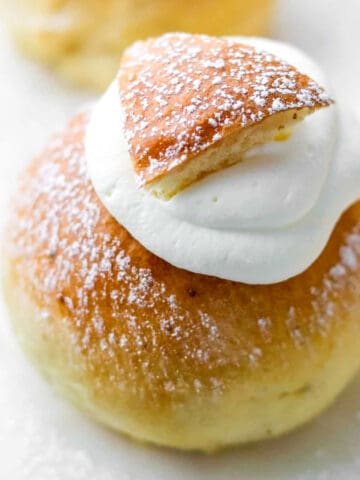
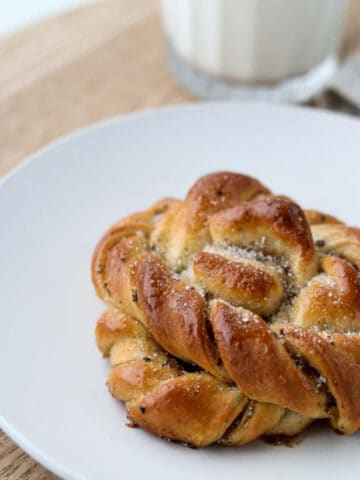
Marge Mellendorf
I just made 6 loaves, usually I give most of them away( I am tempted to eat too much otherwise) I do not use
anise or zest, Bowie's recipe did not have zest in it, however I may try it.
Kristi
Wow! 6 loaves! And so nice of you to share them. Let me know if you like it with the zest and anise. I wasn't sure that I would but it's actually really good. Thanks for the comment, Marge!
Kristi
Heidi
I found a major flaw in this recipe. It doesn't tell you that you'd better make more than one loaf, because you won't be able to stop eating it! This was so delicious, I can't wait to make it again. I'm going to give a few loaves to a friend as a gift, and make a couple for myself.
Kristi
Ha! Thanks, Heidi! So glad you enjoyed the bread and are making more to share with others. It's a family favorite around here!
Kristi
Alison Shoemark
Just about to try this recipe. Can you tell me how much fresh yeast I should use if I don’t have dried? Thanks
Kristi
Hi Alison,
It looks like 1 teaspoon instant yeast (3 grams) = 1/2 block (0.6 ounce size) fresh yeast. So double that amount for the 2 teaspoons called for in the recipe. You will also need to proof the yeast (instant yeast does not require proofing and can go right in with the dry ingredients). You can do this in the butter/molasses/water/orange zest mixture. Just wait to add the yeast until the mixture has cooled a bit (you don't want to kill your yeast). Just warm to the touch should be fine. Hope this helps. Please report back and let me know how it turns out!
Kristi
Alison Shoemark
Thank you for the advice re yeast.....it works well. I love this recipe and it turns out well every time, even though I don’t always get the dough to rise as much as I think it should, the taste is really lovely and it’s very popular.
Kristi
Hi Alison,
Thanks for checking back in! I'm glad the yeast conversion worked well for you. It really is a delicious bread...it always reminds me of the holidays. Thanks again for your feedback! Happy baking to you!
Kristi
Ylva
We are lactose free at our house, therefore we cannot get buttermilk. What do you recommend? We have access to lactose free whole milk.
Tack!
Kristi
Hi!
I would make "buttermilk" out of your lactose free whole milk. Simply add a tablespoon of lemon juice to one cup of milk and stir (vinegar works too). Let sit for 5 minutes and it will be ready to use in the recipe!
Kristi
Priscilla Ferguson-Wagstaffe
We made this limpa for our St. Lucia party last night! Usually it is a big affair with lots of folks and lots of tradition. This year, of course, just "family" and a big St. Lucia "Skol" on Zoom at 5pm, with glögg and akavit! The limpa was a huge hit at our house, so fragrant with anise and orange...can't wait to try it this am as toast!
Kristi
Hi Priscilla,
I'm so glad you enjoyed the limpa! Sounds like you made the most of a 2020 St. Lucia celebration. You are in for a breakfast treat...the toast is amazing! Thanks for taking the time to leave me a comment. It is greatly appreciated!
Kristi
Lydia Bendaa
Great recipe!
Kristi
Thanks, Lydia!
Cathy Gemberling
I make my own yeast, a sourdough starter. Can I use this in this recipe? If so, how much? I am familiar with Limpa bread and don’t want to change the flavor. So if you could also advise if my starter yeast will change the flavor. Thank you so much!
Kristi
Hi Cathy,
I've never made this bread with a sourdough starter but I'm sure you could! It might make the bread a little more tangy but I don't think it would be a bad thing. Let me know if you give it a try!
Kristi
Cathy
Amazing, perfect recipe!! Spot on! I chickened using my sourdough starter. I will experiment with that soon and let you know how it went. Until then, 10 thumbs up for this recipe.
Kristi
Cathy,
So glad you loved the bread! I think a sourdough version would great. Can't wait to hear how it goes!
Kristi
Char
This bread was wonderful; as is everything I have made from you site.
Kristi
Hi Char,
Thanks for your nice comment! I'm so glad you enjoyed the bread. It's one of my favorites!
Kristi
Suzanne K.
Since I moved to Alabama, I don’t get Scandinavian treats unless I make them. So, I made the limpa bread and meatballs with a cranberry/orange relish (in place of the lingonberries) last night. It was delicious! I look forward to testing out more of your recipes.
Kristi
Hi Suzanne,
Sounds like a delicious meal! Thanks so much for your comment!
Kristi
Bud
At 80 years of age and a 1st generation American on my father's (Swedish) side, and second on my (Norwegian/Irish) mother's side I grew up with Scandinavian foods. Blood sausage with LInganberries, goats cheese, potato sausage, Limpa, Almond Tarts, split pea soup, Meatballs, Cucumber salad, Glugg, Swedenhouse coffee and many more found memories. This is the problem with age, memories and the mass produced so called foods of today. Our youth will never know the joy of excellent food.
Kristi
Lucky you to have so many wonderful food memories! Thanks for leaving a comment!
Kristi
Michael Lepak
I used to go to an smorgasbord called Villa Sweden in Huntington Beach, CA as a kid and they had the BEST limpa bread and it was always warm and fresh and I have looked everywhere for this bread to no avail, until tonight!!!!! I thank you Kristi for taking me back to when I was a child. The bread was absolutely amazing!!!!! Loved every bite….OK, more than a bite. Three pieces…..
Kristi
Thanks, Michael! I'm so glad you enjoyed it. It brings back fond memories for me, too!
Happy Baking,
Kristi
Michele
Omg, I just posted a request on Reddit for a limpa recipe based on what we used to get in Huntington Beach! I could not remember the name of the restaurant. They had the best limpa bread ever! I’m so excited!
Sadie
I've made several versions of limpa bread and this is one of the best. The bread is soft and moist. The orange and anise add interest to the flavour without being overwhelming. It's great for sandwiches or toast. The dough was easy to mix and knead by hand. I weighed the flours and didn't use 80 grams of the bread flour to get the right dough consistency. The recipe makes a small loaf. I baked mine in an 8 1/2 x 4 1/2-inch pan for sandwich bread. I made 2 loaves, subbing 1 cup of sourdough discard for some of the bread flour and buttermilk for the second loaf. Both were excellent!
Kristi
That's awesome, Sadie! Thanks for the nice comment! I love your sourdough version. I will have to give that a try!
Kristi
Sadie
One further note on this wonderful bread....the dough also makes amazing soft, moist and delicious sandwich buns. Once again I mixed and kneaded the dough by hand, subbing sourdough discard for some of the liquid and flour. I divided the dough into 6 portions of about 120 grams each for large buns, and baked them for 15 minutes. I'm very happy to have stumbled on this recipe. Thank you for posting!
Lori Hutchison
I had some friends ask me to bake some Swedish Rye Bread… I’m German..well I have to admit this is a very good recipe and they were delighted with the loaf! I now make it often as I live in a Swedish community… sell quickly at my markets.
Robyn Carlsdotter
How did your grandmother use instant yeast since it wasn’t invented until the 1970s? Has this recipe been modified from the original. My grandmothers recipe uses potato water and cake yeast. I suppose the other ingredients weren’t available to her!
Kristi
This recipe is most definitely modified! By the time the recipe came to me it called for active dry yeast, but I prefer baking with instant yeast so I made that change. But I'm sure that my great grandmother probably used cake yeast as well!
Kristi
Russ
Kristi,
My maternal grandmother was born and raised in Kingsburg, CA a Swedish village about 20 mins south of Fresno. Growing up we use to visit 2-3 weeks and get all the wonderful foods and baked goods. Christmas Eve we always had Scandinavian foods. Limpa is my mom’s favorite as her Nonna would bake it for her when she visited. I’m definitely going to make this for mom as she mentioned it the other day, she’s now 82. Will this work in a bread machine?
Kristi
Hi Russ,
I've never tried it but I think it would! It's very much a traditional bread dough so I think it is worth trying.
Kristi
Linda Jensen
Wow, this limpa bread is incredible. I followed the recipe to a tee. Limpa bread success! It tastes just like the limpa bread we had growing up in Bay Ridge, Brooklyn in the 60’s and 70’s every Christmas Eve. It’s been too long without good limpa bread in my life!! Thank you!
P.S. can you make ahead and freeze?
Kristi
Thanks so much for your comment, Linda! I'm so glad this recipe brings back good memories for you. You can definitely freeze this bread! Make sure it is completely cool, wrap well in plastic and finish with a layer of foil. Happy baking!
Kristi
Karen Ekstrom
So delicious! It was my first time making limpa bread, which was my family’s favorite around the holidays. It was so easy I couldn’t believe I didn’t try making it earlier in my life.
Kristi
So glad to hear that Karen! Thanks for your comment!
Kristi
Heather McLaughlin
Can this recipe be doubled or should it be made 1 loaf at a time.
Kristi
Hi Heather,
It can definitely be doubled!
Kristi